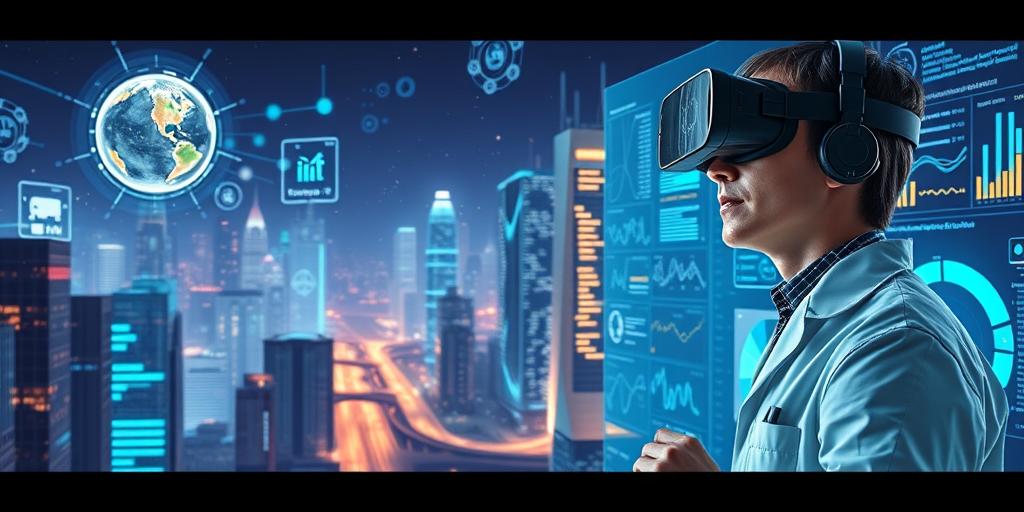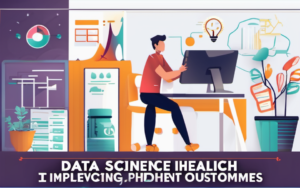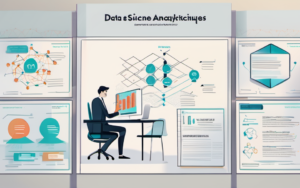The world is becoming increasingly connected, with billions of devices generating vast amounts of data every second. This interconnected web of devices, known as the Internet of Things (IoT), is revolutionizing industries and transforming how we live, work, and interact with the world around us. At the heart of this transformation lies Data Science, which plays a critical role in extracting meaningful insights from the massive datasets generated by IoT devices. As the IoT continues to grow exponentially, so too will the role of Data Science, shaping its evolution and unlocking its full potential.
The Convergence of Data Science and IoT
The rise of the IoT and the advancements in Data Science have created a powerful synergy. This convergence is driving innovation across various sectors and shaping the future of technology.
The Rise of Connected Devices
The IoT is characterized by the proliferation of interconnected devices, ranging from smartphones and smartwatches to industrial sensors and home appliances. This ever-growing network of devices is constantly collecting and transmitting data, creating a massive data stream that needs to be analyzed and interpreted.
The Explosion of Data
The sheer volume of data generated by IoT devices is staggering. This data deluge presents both opportunities and challenges. Data Science provides the tools and techniques needed to process, analyze, and extract valuable insights from this data, enabling businesses and organizations to make informed decisions, optimize operations, and gain a competitive advantage.
Key Trends Shaping the Future of Data Science in IoT
The intersection of Data Science and IoT is a dynamic and rapidly evolving landscape. Several key trends are shaping the future of this field:
Real-Time Analytics and Predictive Modeling
The ability to analyze data in real-time is crucial for maximizing the value of IoT data. Data Science techniques such as real-time analytics and predictive modeling enable organizations to gain immediate insights and make proactive decisions.
Predictive Maintenance
Predictive maintenance is one of the most prominent applications of real-time analytics in IoT. By analyzing sensor data from industrial equipment, Data Science models can predict potential failures before they occur, allowing for preventative maintenance and minimizing downtime.
Personalized Experiences
In consumer-facing applications, real-time analytics can be used to personalize user experiences. For example, smart homes can adjust lighting, temperature, and entertainment systems based on individual preferences, creating a more comfortable and customized living environment.
Edge Computing and Decentralized Data Processing
Traditional cloud-based data processing can be slow and inefficient for real-time IoT applications. Edge computing addresses this challenge by moving data processing closer to the source of data generation. By leveraging edge devices, Data Science models can be deployed closer to sensors and actuators, enabling faster response times and reduced latency.
Artificial Intelligence and Machine Learning
Data Science is heavily reliant on AI and machine learning algorithms. These algorithms are essential for analyzing complex data patterns and extracting meaningful insights from IoT data.
Computer Vision and Image Recognition
Computer vision techniques, powered by machine learning, allow IoT devices to “see” and interpret images. This has applications in areas such as autonomous vehicles, security surveillance, and medical imaging.
Natural Language Processing
Natural language processing (NLP) enables IoT devices to understand and respond to human language. This is particularly useful for voice-controlled smart assistants and chatbots.
Data Security and Privacy
As the IoT grows, so does the need for robust data security and privacy measures. Data Science plays a vital role in ensuring the secure collection, storage, and processing of sensitive data from connected devices. Techniques like encryption, access control, and anomaly detection are crucial for protecting data from unauthorized access and cyberattacks.
Applications of Data Science in IoT
The combination of Data Science and the IoT has far-reaching implications for various industries, leading to significant advancements and transformative applications.
Smart Cities
Data Science is enabling the development of smart cities, where infrastructure and services are optimized using real-time data from sensors, cameras, and other connected devices. This includes applications like traffic management, energy efficiency, and environmental monitoring.
Healthcare
In healthcare, Data Science is being used to develop wearable health trackers, remote patient monitoring systems, and personalized medicine solutions. By analyzing data from connected devices, healthcare professionals can gain a deeper understanding of patient health, predict potential risks, and provide more effective care.
Manufacturing
Data Science is revolutionizing manufacturing processes by optimizing production lines, improving quality control, and enabling predictive maintenance. By analyzing data from sensors on machines, Data Science models can identify bottlenecks, predict equipment failures, and enhance overall efficiency.
Agriculture
Data Science is transforming agriculture through precision farming techniques. By analyzing data from sensors on crops, soil, and weather conditions, farmers can optimize irrigation, fertilization, and pest control, leading to increased yields and reduced environmental impact.
Challenges and Opportunities
While the convergence of Data Science and IoT presents numerous opportunities, it also poses some challenges that need to be addressed.
Data Integration and Standardization
The data generated by IoT devices comes from various sources and formats, making it challenging to integrate and analyze. Data Science techniques are being developed to address this challenge, including data cleaning, transformation, and standardization methods.
Scalability and Performance
The massive volume of data generated by the IoT requires scalable and efficient data processing solutions. Data Science is evolving to handle the demands of large-scale data analysis, with advancements in distributed computing, parallel processing, and cloud computing.
Ethical Considerations
The use of Data Science in IoT raises ethical concerns related to data privacy, security, and bias. It is crucial to develop responsible practices and guidelines for the collection, storage, and analysis of IoT data, ensuring fairness and transparency.
The Future of Data Science in a Connected World
The future of Data Science in the IoT is bright and full of possibilities. As the number of connected devices continues to grow and data generation explodes, Data Science will play an increasingly vital role in extracting insights, driving innovation, and shaping the future of our connected world. With advancements in AI, machine learning, and edge computing, Data Science will continue to evolve, enabling us to unlock the full potential of the IoT and create a more efficient, sustainable, and connected future.




